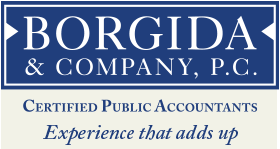In an annual reminder to taxpayers, the Internal Revenue Service announced today that it is looking to return $153.3 million in undelivered tax refund checks. In all, 99,123 taxpayers are due refund checks this year that could not be delivered because of mailing address errors. Undelivered refund checks average $1,547 this year.
Taxpayers who believe their refund check may have been returned to the IRS as undelivered should use the “Where’s My Refund?” tool on IRS.gov. The tool will provide the status of their refund and, in some cases, instructions on how to resolve delivery problems. Taxpayers checking on a refund over the phone will receive instructions on how to update their addresses. Taxpayers can access a telephone version of “Where’s My Refund?” by calling 1-800-829-1954.
While only a small percentage of checks mailed out by the IRS are returned as undelivered, taxpayers can put an end to lost, stolen or undelivered checks by choosing direct deposit when they file either paper or electronic returns. Last year, more than 78.4 million taxpayers chose to receive their refund through direct deposit. Taxpayers can receive refunds directly into their bank account, split a tax refund into two or three financial accounts or even buy a savings bond. The IRS also recommends that taxpayers file their tax returns electronically, because e-file eliminates the risk of lost paper returns. E-file also reduces errors on tax returns and speeds up refunds. Nearly 8 out of 10 taxpayers chose e-file last year. E-file combined with direct deposit is the best option for taxpayers to avoid refund problems; it’s easy, fast and safe.
The public should be aware that the IRS does not contact taxpayers by e-mail to alert them of pending refunds and does not ask for personal or financial information through email. Such messages are common phishing scams. The agency urges taxpayers receiving such messages not to release any personal information, reply, open any attachments or click on any links to avoid malicious code that can infect their computers. The best way for an individual to verify if she or he has a pending refund is going directly to IRS.gov and using the “Where’s My Refund?” tool.
ACTION ITEM: Contact the IRS if you did not receive your refund last year.
Photo By Creative Commons


